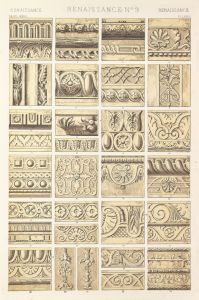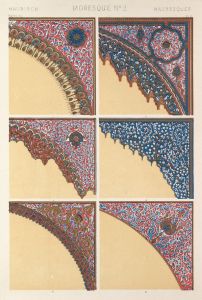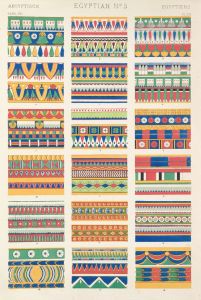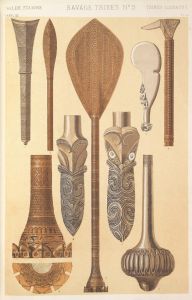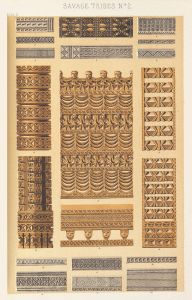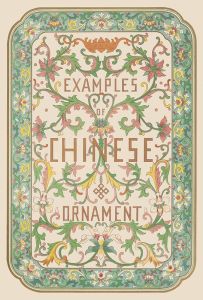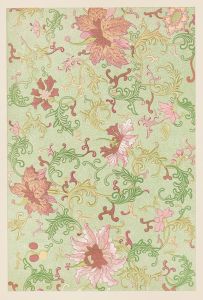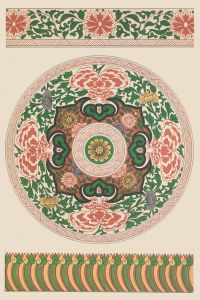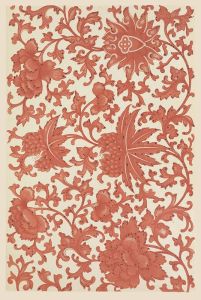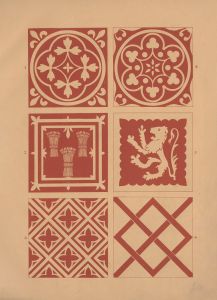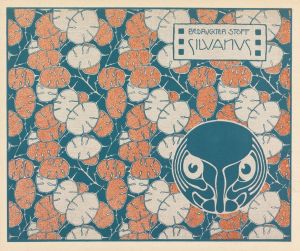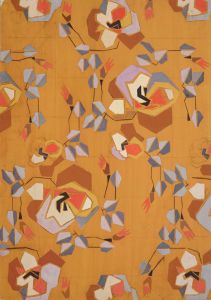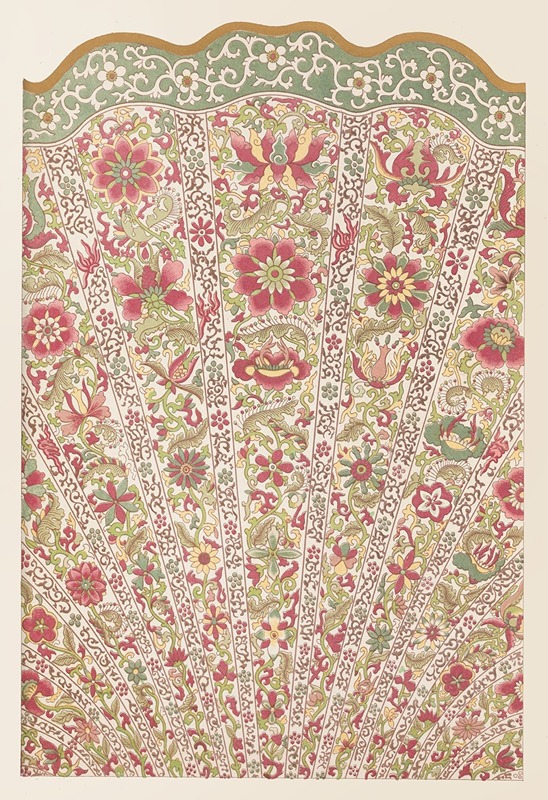
Examples of Chinese ornament, Pl.43
A hand-painted replica of Owen Jones’s masterpiece Examples of Chinese ornament, Pl.43, meticulously crafted by professional artists to capture the true essence of the original. Each piece is created with museum-quality canvas and rare mineral pigments, carefully painted by experienced artists with delicate brushstrokes and rich, layered colors to perfectly recreate the texture of the original artwork. Unlike machine-printed reproductions, this hand-painted version brings the painting to life, infused with the artist’s emotions and skill in every stroke. Whether for personal collection or home decoration, it instantly elevates the artistic atmosphere of any space.
"Examples of Chinese Ornament, Pl.43" is a plate from the influential design book "The Grammar of Ornament," authored by Owen Jones and first published in 1856. Owen Jones was a British architect and designer known for his work in color theory and his contributions to the decorative arts. "The Grammar of Ornament" is a comprehensive collection of design patterns and motifs from various cultures around the world, and it played a significant role in the development of design in the 19th century.
Plate 43 specifically focuses on Chinese ornamentation, showcasing the intricate and symbolic designs that are characteristic of Chinese art. The plate is part of a larger section dedicated to Chinese ornament, which highlights the rich visual language and aesthetic principles found in Chinese decorative arts. These designs often feature motifs such as dragons, phoenixes, floral patterns, and geometric shapes, all of which hold cultural and symbolic significance in Chinese tradition.
Jones's work was groundbreaking in that it sought to document and categorize design elements from diverse cultures, promoting an appreciation for global artistic traditions. His approach was systematic, and he aimed to identify universal principles of design that could be applied across different artistic disciplines. In the case of Chinese ornament, Jones was particularly interested in the use of color, symmetry, and balance, which are key elements in Chinese design philosophy.
The inclusion of Chinese ornament in "The Grammar of Ornament" reflects the 19th-century European fascination with Asian art and culture, a period often referred to as "Chinoiserie." This interest was part of a broader trend of Orientalism, where Western artists and designers drew inspiration from the art and architecture of Asia, often romanticizing and idealizing these elements in their own work.
Jones's documentation of Chinese ornament was not only an artistic endeavor but also an educational one. By providing detailed illustrations and descriptions, he aimed to educate Western designers and craftsmen about the richness and diversity of Chinese art. This cross-cultural exchange contributed to the evolution of design practices in Europe, encouraging a more eclectic and inclusive approach to art and decoration.
"Examples of Chinese Ornament, Pl.43" remains a valuable resource for historians, designers, and artists interested in the history of design and the interplay between different cultural aesthetics. The plate, along with the rest of Jones's work, continues to be studied for its historical significance and its impact on the development of modern design theory.
Overall, Owen Jones's "The Grammar of Ornament" and its depiction of Chinese ornament serve as a testament to the enduring influence of Chinese art on global design and the importance of cross-cultural dialogue in the arts.





